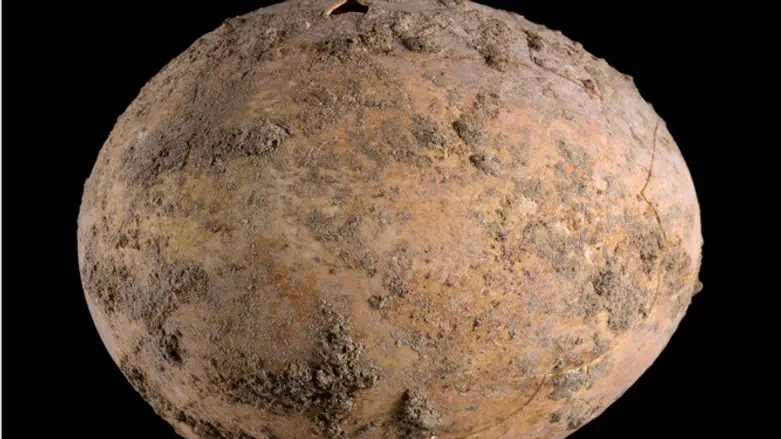
While excavating an ancient cesspit dating from the Islamic period (about 1,000 years ago), Israel Antiquities Authority archaeologists in Yavne were astonished to find an unbroken chicken’s egg.
The large-scale archaeological excavations, directed by Dr. Elie Haddad, Liat Nadav-Ziv and Dr. Jon Seligman, have discovered an extensive and diverse industrial area dating from the Byzantine period.
The excavations are part of the Israel Land Authority’s urban expansion project in the city.
“Eggshell fragments are known from earlier periods, for example in the City of David and at Caesarea and Apollonia, but due to the eggs’ fragile shells, hardly any whole chicken eggs have been preserved.
Even at the global level, this is an extremely rare find,” says Dr. Lee Perry Gal of the Israel Antiquities Authority and a leading expert on poultry in the ancient world. “In archaeological digs, we occasionally find ancient ostrich eggs, whose thicker shells preserve them intact.”
“Even today, eggs rarely survive for long in supermarket cartons. It’s amazing to think this is a 1,000-year-old find!” says Israel Antiquities Authority archaeologist Alla Nagorsky, excavation director at the site where the egg was found. “The egg’s unique preservation is evidently due to the conditions in which it lay for centuries, nestled in a cesspit containing soft human waste that preserved it.”
Poultry farming was introduced into Israel 2,300 years ago, during the Hellenistic and Early Roman periods. In the Islamic period, from the seventh century CE onwards, there is a marked decrease in the percentage of pig bones at sites in the region, reflecting the prohibition on eating pork.
“Families needed a ready protein substitute that does not require cooling and preservation, and they found it in eggs and chicken meat,” explains Dr. Perry Gal. “Unfortunately, the egg had a small crack in the bottom so most of the contents had leaked out of it. Only some of the yolk remained, which was preserved for future DNA analysis.”
Despite the extreme caution with which the egg was removed, under the experienced supervision of a conservationist, the shell of the egg – preserved whole by the unusual anaerobic conditions – was cracked. In the Israel Antiquities Authority’s organics laboratory, conservationist Ilan Naor restored the egg to the state in which it was found.
How did the egg end up in the cesspit? We will never know. Interestingly, other exciting finds were retrieved from the same pit as the egg, including three typical Islamic-period bone dolls used as playthings some 1,000 years ago.